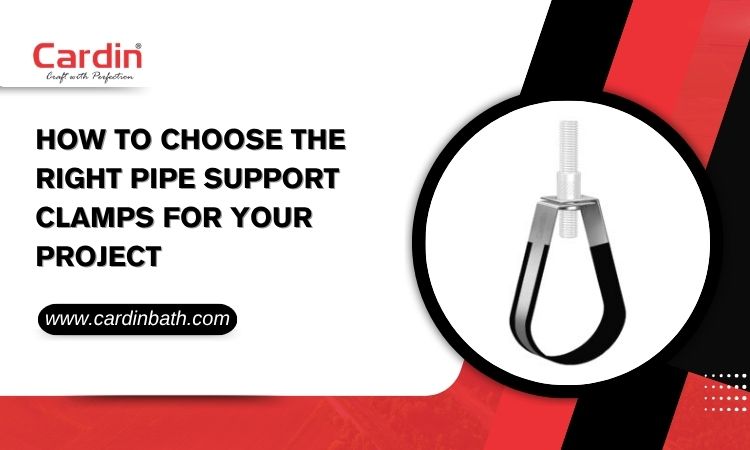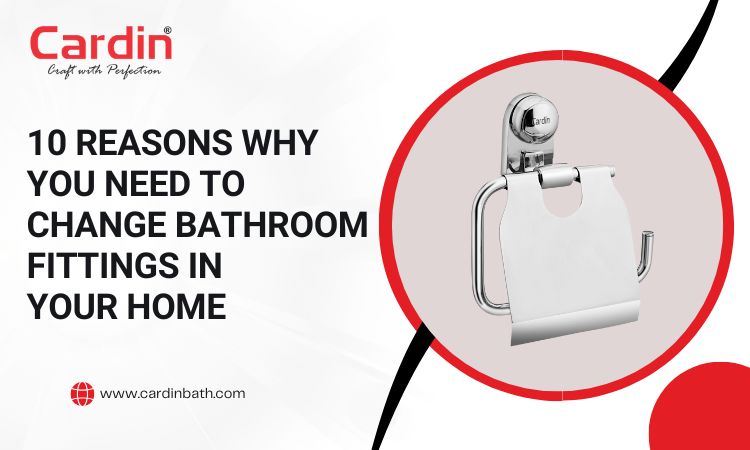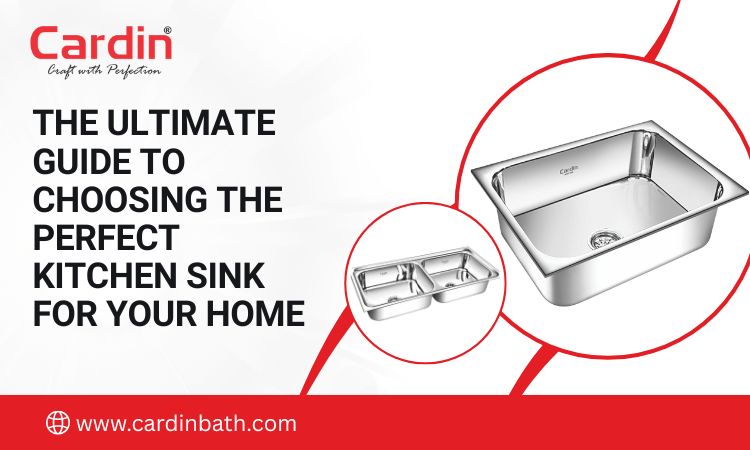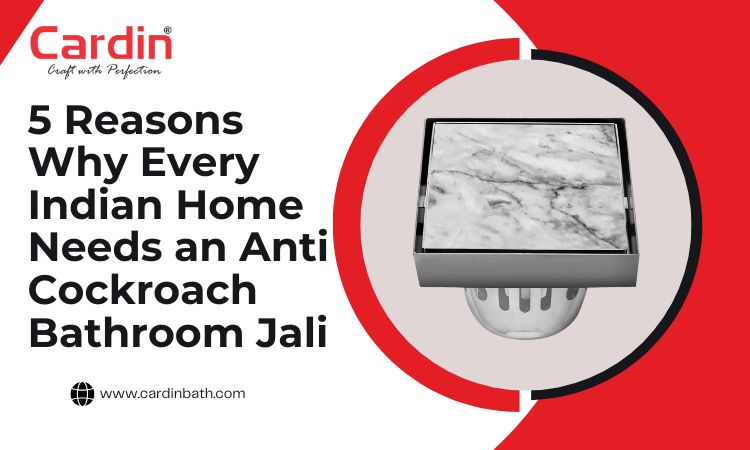When it is about an industrial piping system, a residential plumbing setup, or a complex mechanical installation, pipe support clamps are essential. These are small in size and small components but play an important role in providing a secure, safe, and functional piping infrastructure in the long run. Choosing the wrong clamp can cause problems like pipe movement, vibrations, misalignment, leaks, and even structural failures.
On the other hand, selecting the right pipe support clamps enhances system stability, reduces maintenance costs, and prolongs the life of your entire setup. But before selecting any clamps, consult manufacturer datasheets, review engineering load requirements, and discuss with your supplier or structural engineer.
This blog will help you to understand how to select the most suitable pipe support clamps that will ensure safety and durability in the long term.
Understanding Pipe Support Clamp Basics
Pipe support clamps are mechanical fixtures that are used to secure piping to structural elements like walls, ceilings, or floors. The “clamp” keeps the pipe in place and restricts the unwanted movement caused by flow dynamics, external vibrations, or thermal expansion and contraction. Clamps are important to ensure pipes stay aligned and in place even under pressure or load changes. It helps to absorb vibrations, especially in mechanical rooms and HVAC systems, thus reducing vibration and noise. It also minimizes stress on joints by reducing strain on pipe fittings and joints, which also leads to leaks in the long run.
It protects surrounding structures by preventing damage to building infrastructure due to pipe movement or weight. Clamps made with carbon steel are commonly used to provide strength and affordability in the long run. Clamps with stainless steel are preferred when they are used in corrosive or outdoor environments. Clamps that are made up of plastic or composite are used in special chemical settings or non-load-bearing applications.
Types of Pipe Support Clamps
Selecting the clamp type that will match your project is very important, as it can affect the durability and safety. Following are the common types of clamps available in the market:
1. Standard Pipe Clamps: Standard pipe clamps are suitable for general use in residential or light commercial piping. They are used for vertical or horizontal pipe runs.
2. Heavy-Duty Clamps: Heavy-duty clamps are designed for industrial and high-pressure systems. These clamps provide high load-bearing capacity and structural integrity.
3. Insulated Clamps: Insulated clamps are used in temperature-sensitive systems such as chilled water lines or hot fluid transport that eliminate the chance of heat loss or condensation.
4. Adjustable Clamps: Adjustable clamps are useful when pipe diameters vary or when future adjustments are anticipated. It ensures flexibility during installation and retrofitting.
5. Specialty Clamps: Specialty clamps refer to the cushioned clamps like vibration damping, U-bolts, split-ring hangers, and saddle clamps. These are designed for unique needs like seismic zones, underground lines, or chemical processing.
Key Factors to Consider When Choosing Clamps
To avoid any breakage or accident risk in the future due to wrong decisions about clamps, it’s very important to analyze both technical requirements and environmental conditions in which clamps will be used. The following factors will help you to select the best clamp that will suit your interior while ensuring safety.
- Match the clamp size to the outer diameter of the pipe, and also keep weight in mind when it will be full, including fluid load. The clamp must be able to bear both static and dynamic loads.
- Must consider operating temperature and pressure, as you have to select the clamps that won’t warp or degrade under heat. For pressurized systems, clamps should accommodate expansion, contraction, and vibration.
- Must consider the environmental conditions that clamps have to face. whether it will be used indoors or outdoors, as outdoor clamps should be rust-resistant and UV-stable. Consider stainless steel or coated clamps for the areas with chemical plants and coastal areas.
- Assess the load-bearing capacity of the clamps. You can utilize the manufacturer’s load charts for accurate selection and decision.
- Check for the available installation space and accessibility space; areas with less space may require smaller or pre-assembled clamps. For suspended installations, consider how the clamp will be anchored, like to a ceiling, beam, or strut channel.
Material Selection Guidelines
To ensure durability, performance, and cost savings, you have to look for the material used in the clamp. You save to take care of the materials used in clamps and it has to be considered before buying the clamp. Carbon steel clamps are best for standard indoor applications. These are cost-effective and widely available in the market. It requires a protective coating like zinc or paint to survive in moist environments.
Stainless steel clamps are suited for the areas with chemical plants, marine settings, and food-grade environments, as they are highly resistant to rust and corrosion. It will lead to higher upfront costs but low maintenance in the long run. Galvanized clamps are used for outdoor and semi-industrial use, as the coating provides moderate corrosion resistance. It acts as a middle ground between carbon steel and stainless steel. Plastic or composite clamps are used in labs, pharmaceutical setups, and food processing lines but are not suitable for heavy loads or high temperatures.
Installation Considerations
Proper installation is just as important as clamp selection. Poor installation can negate even the best clamp’s performance.
- To avoid any risk, you should follow standard engineering tables or manufacturer recommendations, as heavier pipes or those carrying moving fluids require closer clamp spacing.
- Ensure the surface, like a wall, beam, or floor, is strong enough to hold the load. Use proper anchors and fasteners for the accurate analysis.
- You have to use basic tools like wrenches, drills, anchors, and spacers. Also, specialty tools are needed for adjustable or insulated clamps.
- To avoid any health risk, wear safety gear like gloves and eye protection. Secure the pipe before loosening or removing old clamps, and don’t exceed the rated capacity of the clamp.
Common Mistakes to Avoid
Avoid the following mistake, as it can save you from costly repair or system failure in the long run.
- Avoid under sizing the clamp, as too-small clamps can stress the pipe and lead to cracking or movement.
- Don’t ignore environmental conditions in which clamps will be used, as using non-corrosion-resistant clamps outdoors can lead to rapid degradation of the clamps.
- Take care of spacing, as too-small clamps can cause sagging or undue stress at joints.
- Avoid mismatching of materials, as using a steel clamp on a copper pipe can cause galvanic corrosion.
- Don’t neglect thermal expansion, as high-temperature systems need room to expand; this rigid clamping can lead to pipe damage.
Cost vs. Quality Analysis
Budget can affect the decision-making in purchasing the clamp, but balancing the short-term savings with long-term reliability is also important. You can use budget-friendly options like carbon steel with zinc coating for basic use and plastic clamps for low-load or non-critical applications. If your pocket will allow you and you are looking for a premium solution, then you can try stainless steel for critical environments or insulated clamps for HVAC and thermal applications. Whereas if you want a long-term solution, then investing in high-quality clamps can be a good decision that can reduce downtime, maintenance, and system failure.
Conclusion
Pipe support clamps can be a small decision or component but have a huge impact in terms of safety, durability, and reliability. Choosing the right clamp can give you peace of mind, as they are safe, efficient, and durable. From understanding clamp types and materials to considering pipe weight, environment, and installation constraints, every decision will ensure the security of the pipe and people living around that area. Investing in the right pipe support clamp can be a good decision while saving your project from major issues in the long run.
For expert guidance, contact a Floor drain covers specialist who also deals in bathroom fittings, pipe solutions, and drainage components to ensure reliable and professional recommendations.






